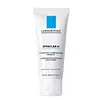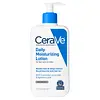What's inside
What's inside
 Key Ingredients
Key Ingredients

 Benefits
Benefits

 Concerns
Concerns

 Ingredients Side-by-side
Ingredients Side-by-side

Water
Skin ConditioningDimethicone
EmollientGlycerin
HumectantPropylene Glycol
HumectantEthylhexyl Palmitate
EmollientSqualane
EmollientNiacinamide
SmoothingCaprylic/Capric Triglyceride
MaskingButyrospermum Parkii Butter
Skin ConditioningPEG-100 Stearate
Glyceryl Stearate
EmollientPEG-20 Stearate
EmulsifyingCarbomer
Emulsion StabilisingTriethanolamine
BufferingDimethicone/Vinyl Dimethicone Crosspolymer
Skin ConditioningMyristyl Malate Phosphonic Acid
Skin ConditioningAmmonium Polyacryloyldimethyl Taurate
Emulsion StabilisingHydroxypalmitoyl Sphinganine
Skin ConditioningCaprylyl Glycol
EmollientTetrasodium EDTA
Xanthan Gum
EmulsifyingCetyl Alcohol
EmollientTocopherol
AntioxidantPhenoxyethanol
PreservativeParfum
MaskingWater, Dimethicone, Glycerin, Propylene Glycol, Ethylhexyl Palmitate, Squalane, Niacinamide, Caprylic/Capric Triglyceride, Butyrospermum Parkii Butter, PEG-100 Stearate, Glyceryl Stearate, PEG-20 Stearate, Carbomer, Triethanolamine, Dimethicone/Vinyl Dimethicone Crosspolymer, Myristyl Malate Phosphonic Acid, Ammonium Polyacryloyldimethyl Taurate, Hydroxypalmitoyl Sphinganine, Caprylyl Glycol, Tetrasodium EDTA, Xanthan Gum, Cetyl Alcohol, Tocopherol, Phenoxyethanol, Parfum
Water
Skin ConditioningGlycerin
HumectantCaprylic/Capric Triglyceride
MaskingCetearyl Alcohol
EmollientCetyl Alcohol
EmollientPotassium Phosphate
BufferingCeramide NP
Skin ConditioningCeramide AP
Skin ConditioningCeramide EOP
Skin ConditioningCarbomer
Emulsion StabilisingDimethicone
EmollientCeteareth-20
CleansingBehentrimonium Methosulfate
Methylparaben
PreservativeSodium Lauroyl Lactylate
EmulsifyingCholesterol
EmollientDisodium EDTA
Dipotassium Phosphate
BufferingPropylparaben
PreservativeHydrolyzed Hyaluronic Acid
HumectantPhytosphingosine
Skin ConditioningXanthan Gum
EmulsifyingPolysorbate 20
EmulsifyingPolyglyceryl-3 Diisostearate
EmulsifyingWater, Glycerin, Caprylic/Capric Triglyceride, Cetearyl Alcohol, Cetyl Alcohol, Potassium Phosphate, Ceramide NP, Ceramide AP, Ceramide EOP, Carbomer, Dimethicone, Ceteareth-20, Behentrimonium Methosulfate, Methylparaben, Sodium Lauroyl Lactylate, Cholesterol, Disodium EDTA, Dipotassium Phosphate, Propylparaben, Hydrolyzed Hyaluronic Acid, Phytosphingosine, Xanthan Gum, Polysorbate 20, Polyglyceryl-3 Diisostearate
 Reviews
Reviews

Ingredients Explained
These ingredients are found in both products.
Ingredients higher up in an ingredient list are typically present in a larger amount.
This ingredient is an emollient, solvent, and texture enhancer. It is considered a skin-softener by helping the skin prevent moisture loss.
It helps thicken a product's formula and makes it easier to spread by dissolving clumping compounds.
Caprylic Triglyceride is made by combining glycerin with coconut oil, forming a clear liquid.
While there is an assumption Caprylic Triglyceride can clog pores due to it being derived from coconut oil, there is no research supporting this.
Learn more about Caprylic/Capric TriglycerideCarbomer is a polymer of acrylic acid. Its main role is to create a gel consistency.
A high amount of carbomer can cause pilling or balling up of products. Don't worry, most products contain 1% or less of carbomer.
Cetyl Alcohol is a fatty alcohol. Fatty Alcohols are most often used as an emollient or to thicken a product.
Its main roles are:
Though it has "alcohol" in the name, it is not related to denatured alcohol or ethyl alcohol.
The FDA allows products labeled "alcohol-free" to have fatty alcohols.
Learn more about Cetyl AlcoholDimethicone is a type of synthetic silicone created from natural materials such as quartz.
What it does:
Dimethicone comes in different viscosities:
Depending on the viscosity, dimethicone has different properties.
Ingredients lists don't always show which type is used, so we recommend reaching out to the brand if you have questions about the viscosity.
This ingredient is unlikely to cause irritation because it does not get absorbed into skin. However, people with silicone allergies should be careful about using this ingredient.
Note: Dimethicone may contribute to pilling. This is because it is not oil or water soluble, so pilling may occur when layered with products. When mixed with heavy oils in a formula, the outcome is also quite greasy.
Learn more about DimethiconeGlycerin is already naturally found in your skin. It helps moisturize and protect your skin.
A study from 2016 found glycerin to be more effective as a humectant than AHAs and hyaluronic acid.
As a humectant, it helps the skin stay hydrated by pulling moisture to your skin. The low molecular weight of glycerin allows it to pull moisture into the deeper layers of your skin.
Hydrated skin improves your skin barrier; Your skin barrier helps protect against irritants and bacteria.
Glycerin has also been found to have antimicrobial and antiviral properties. Due to these properties, glycerin is often used in wound and burn treatments.
In cosmetics, glycerin is usually derived from plants such as soybean or palm. However, it can also be sourced from animals, such as tallow or animal fat.
This ingredient is organic, colorless, odorless, and non-toxic.
Glycerin is the name for this ingredient in American English. British English uses Glycerol/Glycerine.
Learn more about GlycerinWater. It's the most common cosmetic ingredient of all. You'll usually see it at the top of ingredient lists, meaning that it makes up the largest part of the product.
So why is it so popular? Water most often acts as a solvent - this means that it helps dissolve other ingredients into the formulation.
You'll also recognize water as that liquid we all need to stay alive. If you see this, drink a glass of water. Stay hydrated!
Learn more about WaterXanthan gum is used as a stabilizer and thickener within cosmetic products. It helps give products a sticky, thick feeling - preventing them from being too runny.
On the technical side of things, xanthan gum is a polysaccharide - a combination consisting of multiple sugar molecules bonded together.
Xanthan gum is a pretty common and great ingredient. It is a natural, non-toxic, non-irritating ingredient that is also commonly used in food products.
Learn more about Xanthan Gum